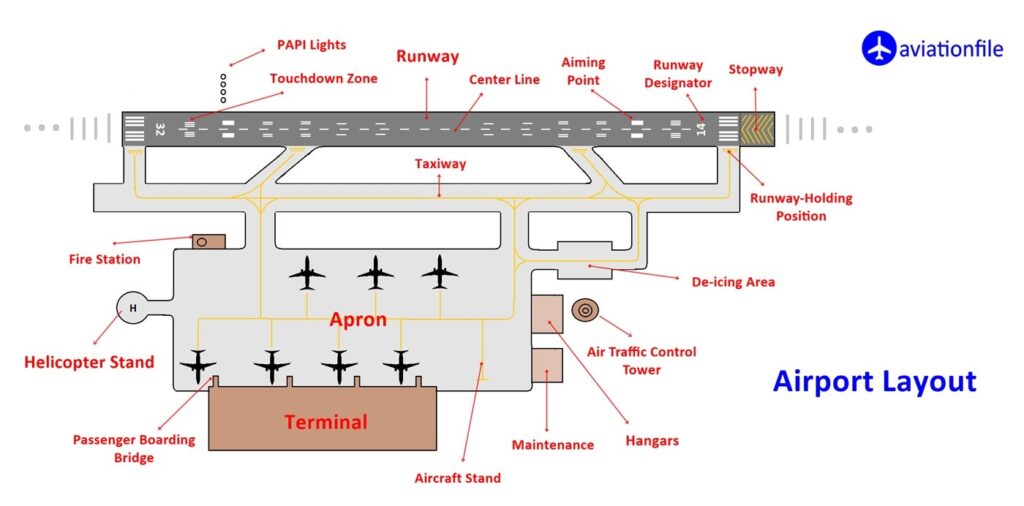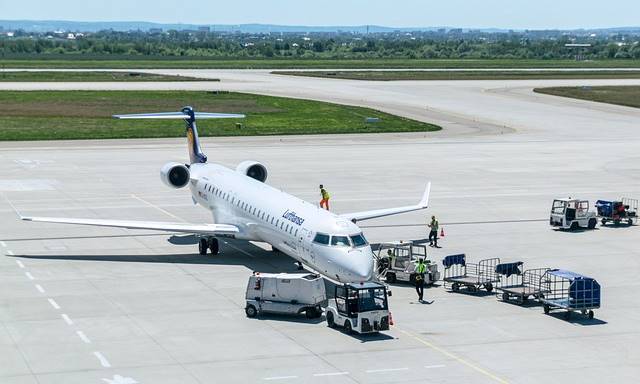The Importance of Ground Operations in Airport Management
While the allure of aviation often focuses on the thrill of flight, the success of any airport hinges on the efficient and meticulous execution of ground operations. These crucial, yet often unseen, tasks form the backbone of a smooth and safe travel experience for passengers and crew alike.
Safety: The Paramount Priority
- Accident Prevention: The airport ramp is a dynamic environment bustling with aircraft, baggage, and personnel. Effective ground operations management minimizes the risk of collisions and incidents, safeguarding the well-being of everyone involved.
- Ensuring Flight Readiness: From meticulous cargo loading and secure baggage handling to precise aircraft fueling and pre-flight checks, ground operations are the invisible hands guaranteeing a safe and successful journey for every departing flight.

Efficiency: The Key to Smooth Operations
- Minimizing Delays: Every minute counts in the fast-paced world of aviation. Streamlined ground handling plays a pivotal role in reducing turnaround times, ensuring flights depart and arrive on schedule, minimizing inconveniences for passengers and maintaining tight flight schedules for airlines.
- Optimizing Resources: Ground operations, when meticulously coordinated, ensure the right equipment and personnel are readily available at the designated times. This not only optimizes resource allocation but also translates to cost savings for airlines and airport management.
Investing in the Backbone: The Ground Crew
A skilled and well-trained ground crew is the cornerstone of efficient airport operations. By investing in their training, development, and well-being, airport management fosters a culture of safety, promotes clear communication, and ensures the smooth flow of passengers, cargo, and aircraft. This investment extends beyond just financial resources; fostering a positive work environment and fostering a sense of value within the ground crew leads to increased morale, motivation, and ultimately, a safer and more efficient operation.
The Intertwined Symphony: Airport Design and Ground Operations
Airport design and ground operations are not isolated entities; they function as a beautifully intertwined symphony, each element influencing and being influenced by the other. Well-planned layouts with designated taxiways, separation between arriving and departing aircraft, and strategically placed gates are crucial for minimizing congestion and improving turnaround times. This thoughtful design not only enhances the efficiency of ground crew activities but also contributes directly to the safety of the entire operation. Additionally, the strategic placement of baggage handling systems, cargo facilities, and ground support equipment within the airport’s infrastructure further streamlines ground operations. This synergy between thoughtful design and efficient ground operations is essential for creating a safe, efficient, and thriving airport ecosystem.
Beyond the Basics: Embracing Innovation and Technology
The aviation industry is constantly evolving, and ground operations are no exception. By embracing technological advancements like automated baggage handling systems, digital communication platforms, and real-time flight tracking, airports can further streamline processes, enhance efficiency, and improve the overall travel experience for everyone involved.
In conclusion, prioritizing and optimizing ground operations is not merely an operational necessity, but a strategic investment for airports. By ensuring safety, efficiency, and continuous improvement, airports can position themselves as thriving air travel hubs, fostering positive experiences for passengers, airlines, and the entire aviation community.
References and Further Reading:
- Federal Aviation Administration (FAA). (2019). Airport Design. Retrieved from https://www.faa.gov/airports/engineering/design/
- International Air Transport Association (IATA). (2019). Airport Handling Manual. Retrieved from https://www.iata.org/en/publications/store/airport-handling-manual/
- aviationfile.com



